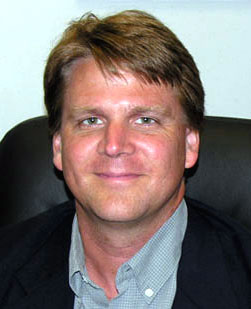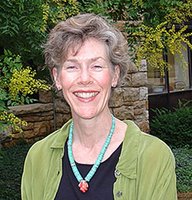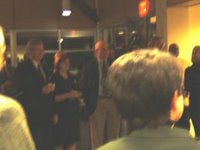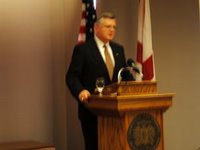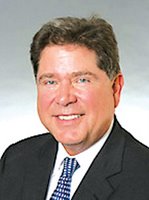Wrapping Up the Day With Cole Campbell

Following the official premiere of "The Teaching Newspaper" video and another ON POINT presentation by yours truly and John Fleming, editor-at-large at The Anniston Star, a much smaller crowd that remains here in the Zannie Theatre talked about what was learned from the presentations and discussions today.
"Even though it is as old as journalism, community journalism is still an emergent concept," said Cole Campbell, director of the Reynolds School of Journalism at University of Nevado-Reno. " Community journalism is a conceptual blend."
"Community journalism is really a conceptual blend..by define an idea by pulling from two parent ideas. Teaching hospital pulls from the science of medicine and practice of medicine, he said.
"Conceptual blends are highly selective. Conceptual blends work because it sorts out the attributes of each parent concept that really work, that really make sense," said Campbell.
"One of the touchstone ideas throughout the day is the notion of intimacy," he said.
What are the ideas or the ideas, the theories that we can draw out of our conversation?
Here's a list of the some of the things the group came up as our daylong conversation concluded:
-Coherence, Meaning and Possibility
-Personal Connection
-Cultural Connection
-Community Transcends Geograpphy because of shared experience
-We're not telling a story, we're telling someone's story
-Cover the normal as well as the abnormal
-Interdependence with whom?
-"Hope to get the paper out" is a constraint
-Digital tech. overcomes barriers, offers feedback
-Concern: First responsibility to consumer
-Gathering point, stabilized through community conversation
-Community as a process



